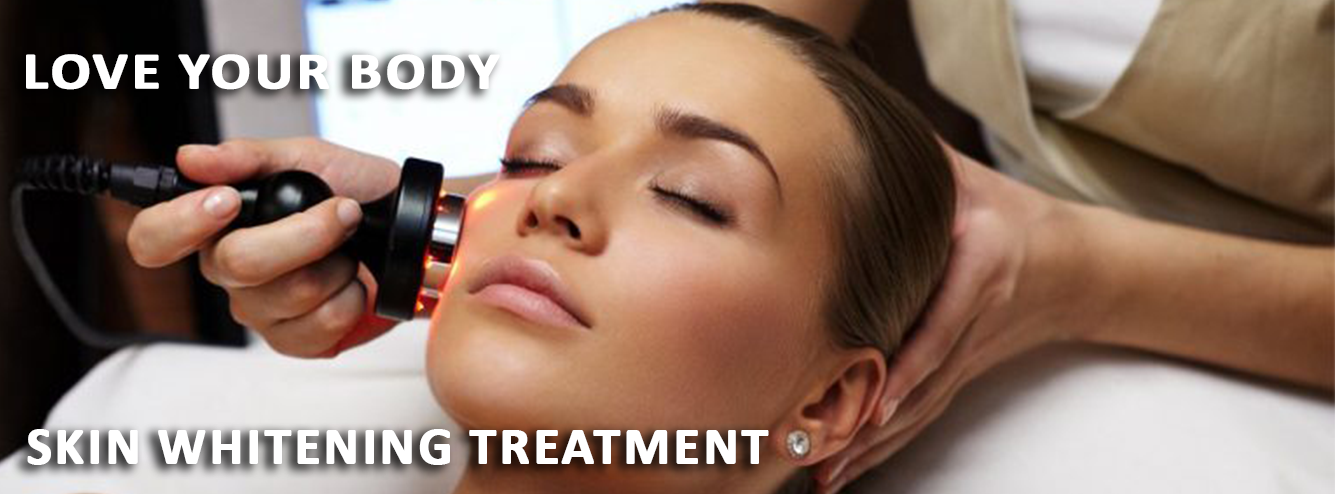

All women, regardless of age or ethnicity want even, clear and radiant skin. For most women, the challenge to achieve radiant skin begins with dark spots or hyperpigmentation caused by the accumulation of melanin. Hyperpigmentation can be exacerbated by genetics and ethnicity. For black and brown skinned women of African, South East Asian and Hispanic descent, hyperpigmentation can create an uneven skin tone.
For Caucasian women of European or Asian descent, blotchiness and spots caused by sun damage and the aging process stand in the way of clear and radiant skin. Other roadblocks to clear skin are dryness and breakouts caused by hormonal fluctuations related to life changes like menopause and stress. Even though they sound the same, there is actually a significant difference between skin lightening, whitening & brightening. Before deciding on your skin care routine, it is very important to understand all three of these categories, their pluses & minuses, and even the potential risks to your health which may be involved.
.png)
In contrast to skin whitening,"skin lightening" has a positive function other than achieving a lighter complexion. In order to understand what skin lightening actually is we first need to understand what hyperpigmentation is.
Hyperpigmentation is a common skin condition that refers to any darkening of the skin. Dark patches form usually on the face and hands or other areas that are commonly exposed to the sun. This darkening of the skin occurs when an excess of melanin, which is a brown pigment that gives our skin its color, forms deposits in our skin. Although hyperpigmentation is harmless many people are uncomfortable with the way it makes them look.
Hyperpigmentation spots are often caused by repeated exposure to the sun. Freckles and other darkened skin areas can become darker from sun exposure. This happens by the melanin absorbing the sun’s harmful ultraviolet rays in order to protect the skin from overexposure.
Another form of hyperpigmentation is Melasma. Melasma spots are larger than the spots caused by sun damage. They appear as symmetric blotchy hyperpigmented patches on the face, usually the cheeks, bridge of the nose, forehead, chin, and upper lip. They are most often caused by hormonal changes. Pregnancy and the use of birth control pills can also bring about the overproduction of melanin, due to hormonal changes. Acne and other skin diseases may cause hyperpigmentation, leaving dark spots after the condition clears.
The goal of skin lightening is not to bleach your skin, but to fade out unwanted blemishes by inhibiting melanin, which gives your skin its color. Within the many different layers of our skin, there is a layer called the basal layer. In this layer, our skin cells form and divide to create the outer skin layer. In this layer, there is a cell called a melanocyte. This cell is responsible for transporting melanosomes which are cells that contain pigment (melanin) which gives us our skin color. Located in the melanocyte is an enzyme called tyrosinase. This enzyme is responsible for the production of melanin. Hyperpigmentation is caused by this enzyme over producing melanin.
To remedy this, many skin lightening products have been formulated to inhibit tyrosinase, essentially stopping it from over producing melanin. Skin lightening products that include tyrosinase inhibitors are not only for people with hyperpigmentation. Many people with even skin use these products to prevent hyperpigmentation in the future as it is far easier to prevent hyperpigmentation than to correct it once it is present in your skin. Unfortunately even if hyperpigmentation is corrected it can return due to our skin having a memory. Another reason skin lightening is recommended for people with even skin is sometimes hyperpigmentation lies beneath the surface of the skin and will emerge in later life.
"Skin Lightening" reduces pigmentation, lightens discoloration, eliminates blemishes and evens skin tone. Importantly, it can be done through simple skin care products, and does not require any type of medical procedure. Skin lightening products target particular areas of discolorations like age spots and hyperpigmentation from acne breakouts and bruising. Lightening creams work to reduce the melanin pigmentation in a particular area on the skin. Lightening products are best used for a limited period of time.